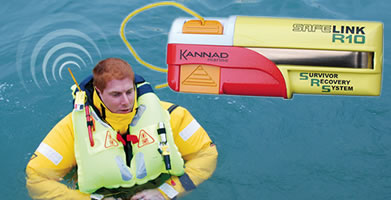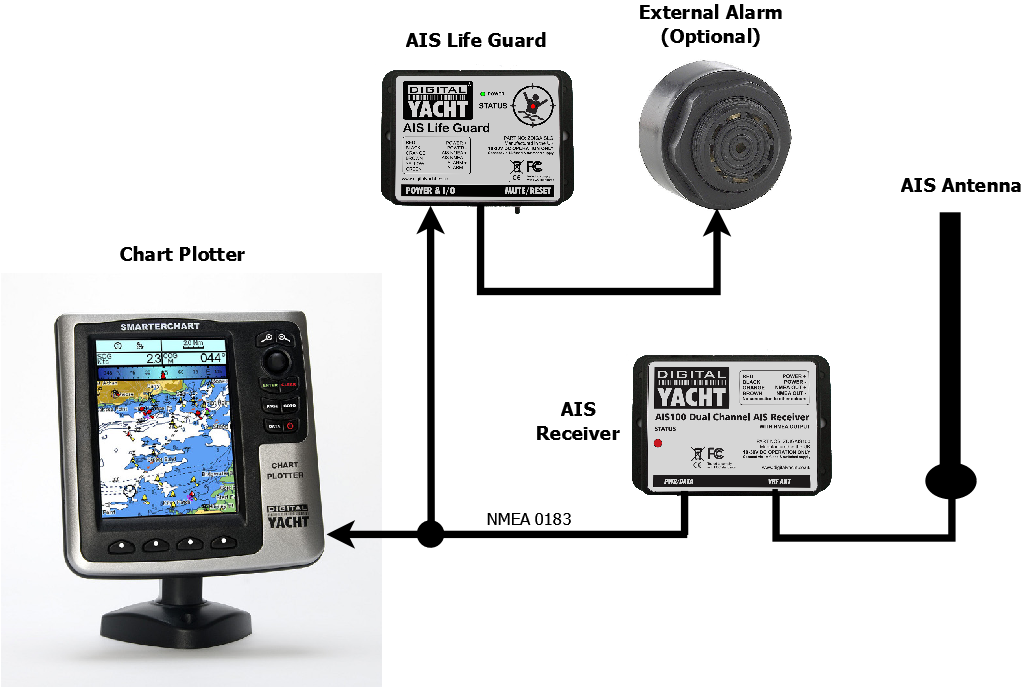In 2010, the IMO approved the use of AIS SARTs as an alternative to the traditional Radar SARTS. An AIS SART consists of a GPS receiver and an AIS Transponder that when activated, quickly gets a position fix and then transmits a special combination of AIS Messages 1 and 14 that can be detected by any AIS receiver or transponder within radio range of the SART.
AIS SARTs will gradually replace Radar SARTs on SOLAS vessels and larger pleasure vessels, but it is the new personal AIS SARTs (introduced via RTCM spec cC11901.0) that will be of most interest to yachtsmen. These small hand held devices transmit the same sort of messages as the AIS SART and can be fitted to a life jacket as a personal MOB device.
In the event of an emergency, they can be automatically or manually activated and then the position of the MOB will be accurately relayed to all AIS equipped vessels within a radius of 2-3 Nautical Miles. Unlike conventional MOB systems, these personal AIS SARTs continue to transmit the exact location of the MOB, which in strong tides or bad weather is a major safety benefit.
On the assumption that the best vessel to pick up the MOB is the vessel they fell from, it is important when deciding to invest in an AIS MOB system that you ensure that your existing AIS system and chart plotter/PC Software, will respond properly to the AIS SART messages.
There are two areas to check;
1) That your AIS Receiver or Transponder will receive and send the new Message 14 to your chart plotter, either via NMEA0183 or NMEA2000.
2) How your chart plotter/PC Software will react to an AIS SART situation i.e. does it sound an alarm and displays the AIS SART in a clear and distinct manner ?
When the AIS SART system was designed, compatibility with older equipment was achieved by using the existing AIS Message 1 – Class A Position Report. This ensured that all AIS compatible chart plotters would, at least, display an AIS SART as a Class A vessel. On these older chart plotters, no alarm would necessarily occur and the only way to tell if the target shown on the plotter is the AIS SART is to check if the MMSI number starts with 97 (reserved for AIS SARTs).
On more modern chart plotters (2011 or later), the new Message 14 Safety Related Broadcast is also decoded, triggering a Man Over Board type alarm and displaying the AIS SART on the chart with a special symbol, making it easy to identify and alerting everyone on board to the situation. However, many older systems do not react in this way and just show the AIS SART as another Class A vessel, with no special alarms or symbols.
The good news for Digital Yacht customers, is that all Digital Yacht AIS units are compatible with the AIS SART messages. What is more, we have also developed a product called AIS Life Guard that is a low cost, low power, stand alone AIS SART Alarm.
So if your chart plotter is one of the many older systems that does not handle AIS SARTs very well, our new AIS Life Guard product will patiently monitor the NMEA 0183 output of an AIS receiver or transponder and immediately sound a 95dB internal alarm and/or drive an additional external alarm to make sure everyone on board is alerted to the man overboard situation.
With a power consumption of less than 0.1A, you can leave the AIS Life Guard permanently on monitoring the AIS messages but consuming much less power than a chart plotter. Should an emergency occur, Life Guard will sound the alarm, so you can fire up the chart plotter and locate the AIS SART on the screen.
Below is a diagram showing how the AIS Life Guard can be added to an existing installation – click on image to view it full size.









WHAT PROTOCOL IS USED FOR TRANSMITTING MOB MESSAGE….. SO-TDMA OR CS-TDMA ?
Hi Kenny,
All AIS SARTs and MOBs use SOTDMA, the same protocol as used by a Class A and which guarantees a time slot.
Best regards
PAUL